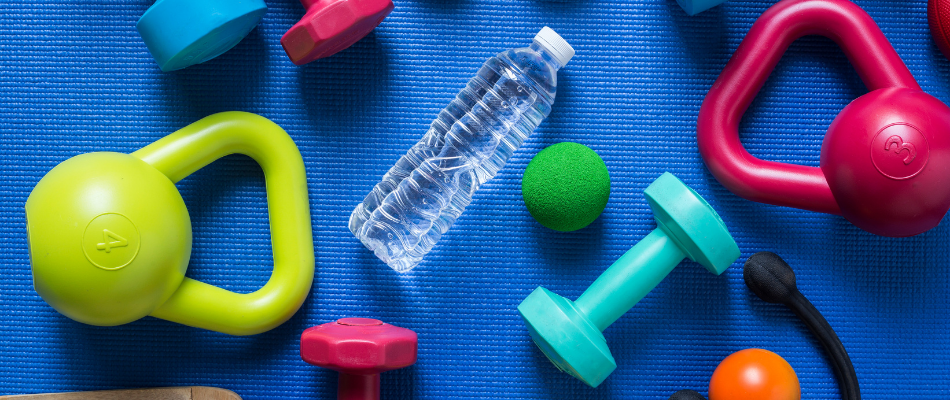We have set our fitness goals and started the conversation about healthy eating habits – now we are ready to go!
But where do we start? There are so many different fitness programmes out there (especially now – programmes promising that you will have your beach-body ready in 30 days).
How do you know which one is best for you? How do you know which one will assist best in reaching your goals? How will you know if you will like it, because if you don’t, you will not sustain it. Who wants to do something they don’t like?
In this article, we will start answering these questions by providing you with an understanding of the differences between strength training programmes and cardiovascular conditioning programmes.
What is the difference – surely, exercise is exercise? Not so much. If you are aiming to get the most out of the time you spend training, you should understand the benefits of different types of training so that you can make an informed decision.
 Each form of exercise has different benefits, and your decision regarding which one to do the most would depend on your fitness goals. But before we get to the benefits of each form of exercise, let us look at what they are.
Each form of exercise has different benefits, and your decision regarding which one to do the most would depend on your fitness goals. But before we get to the benefits of each form of exercise, let us look at what they are.
The Difference Between Strength Training (Resistance) And Cardiovascular Conditioning (Cardio)
There have been many debates regarding which type of training adds more value towards individual fitness: strength training vs. cardio. The difference between the two is explained through the effect each has on the body.
Strength training (resistance) is referred to as an anaerobic activity, an activity that involves a higher intensity, higher power version of an exercise.
Cardiovascular conditioning (cardio) is an aerobic activity – which means exercise ‘with oxygen’.
Strength Training: Types and Benefits
Strength (or resistance) training refers to exercises and movements that require short bursts of intense energy. Types of exercises in this group include weightlifting, sprinting, biking, jumping rope and high-intensity interval training (HIIT). Those people that you see in the gym lifting weights or using weight machines then switching to push-ups and sit-ups are busy with strength training.
Usually, strength trainers will do a set of weightlifting exercises focused on a muscle group (like 20 bicep curls with a free weight), rest for 30 seconds, and then repeat the exercise three times (which they call ‘sets’). Thereafter, they will move to another muscle group. Strength trainers will focus on one group of muscles per session – the back and shoulders, legs, arms, or core. HIIT training focuses on the whole body.
The benefit of anaerobic exercise is that it breaks down glucose for energy without using surplus oxygen. The idea is that a lot of energy is released in a small period, building muscle. With strength training, you burn calories even after you’ve finished training. This happens because the muscle that you are building doesn’t stop working when you stop training. It continues to work and increases your resting metabolism (remember – metabolism is the body’s ability to burn calories even when you are not exercising). Muscle burns more calories than fat.
Furthermore, strength training prevents injury. As we suggested in a previous article, lifting weights helps increase bone density and increases the body’s ability to prevent injury. Stronger muscles also help your joints by strengthening the muscles around the joint area.
Cardiovascular Conditioning (Cardio) Types and Benefits
Cardiovascular conditioning refers to activities which increase your breathing and heart rate – any exercise that makes you breathe harder and faster and increases your heart rate count.
There are many types of cardio exercises: running, cycling, swimming, exercise classes, dancing, walking, even cleaning your house and mowing the lawn falls under cardio exercises. So, any exercise that makes your heart beat faster, and makes you sweat.
Cardio exercises help boost your aerobic capacity (how much oxygen your blood gets). It also increases your heart and lungs, which boosts capacity to move oxygen through your body.
Cardio exercises burn more calories during your workout, your body needs energy to power through the increased breathing and heart rate count! Compared to weight training, cardio burns more fat, and therefore, it is perceived that weight loss is faster.
So, where to from here?
A study done at Duke University in 2012 took three groups of adults carrying excess weight. One group did cardio exercises only, the second group did strength training only and the third group did a combination of the two.
In reducing fat and body mass, the group doing only cardio exercises and the group doing a combination of cardio and strength training had the same weight loss results. The group doing only strength training had a lower fat and body mass reduction.
So, where to from here? The answer to this question (again), lies with you. Your decision should be based on the purpose of your fitness programme, what you like doing and the time you allow yourself to exercise. A combination of cardio and strength training is great for weight loss and better heart health.
What is very important is that you provide your body with what it needs to keep you healthy and strong. It is still your choice, your responsibility, and your health. You are the master of your life.
Read also:







